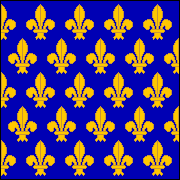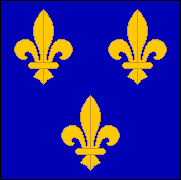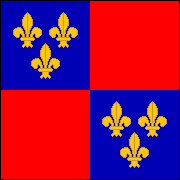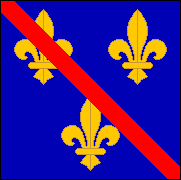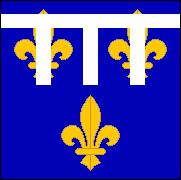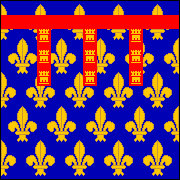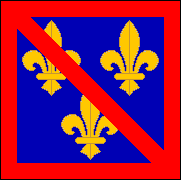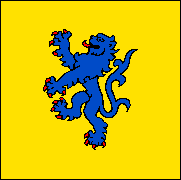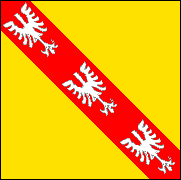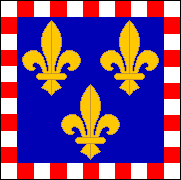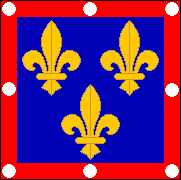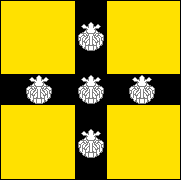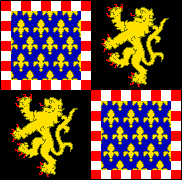A ROYAL FELLOWSHIP OF DEATH
THE FRENCH ARMY AT AGINCOURT • 1415
In pursuit of his claim to the French crown, King Henry V of England invaded France in 1415. The campaign began well for the English, but by the autumn of the year Henry's army was sick, hungry, exhausted and closely beset by a much larger French force. Though the English would have preferred to avoid a battle, the skillful maneuvering of the French commander, Charles d'Albret, Constable of France, left them with no choice in the matter. On October 25—Saint Crispin's Day—King Henry arrayed his troops on the field of Agincourt. He had about 10,000 troops, including 6,000 archers armed with the deadly English longbow. The French army, numbering some 40,000 men, was utterly confident of victory.
But Henry had chosen his ground shrewdly. The narrow battlefield was hemmed in by woods, preventing the French from bringing all their strength to bear at once, and it was muddy from days of rain. This negated the French army's great numerical superiority and exposed their packed ranks to the full fury of the English arrow storm. Thus, when battle was joined, the proud chivalry of France were routed with great slaughter. Some 5,000 Frenchmen of noble birth lost their lives in a series of headlong charges, both mounted and on foot, that collapsed under "a terrifying hail of arrow shot" in the words of a contemporary French account. "This was a royal fellowship of death," Shakespeare has Henry remark as the King is read the tally of the slain enemy. English casualties on the other hand were comparatively trivial: about 450 are thought to have been killed in battle or died of their wounds.
The French army at Agincourt had no fixed organization. Soldiers mustered under the command of the great nobles, whose banners served in effect as company and regimental colors. The royal banner of France, symbolizing the authority of the French crown, was the closest thing to a national flag. Originally this was a blue banner semé of gold fleurs de lys (France Ancient), though by the time of Agincourt the blazoning has been altered to three gold fleurs de lys (France Modern). Both versions are illustrated below.
